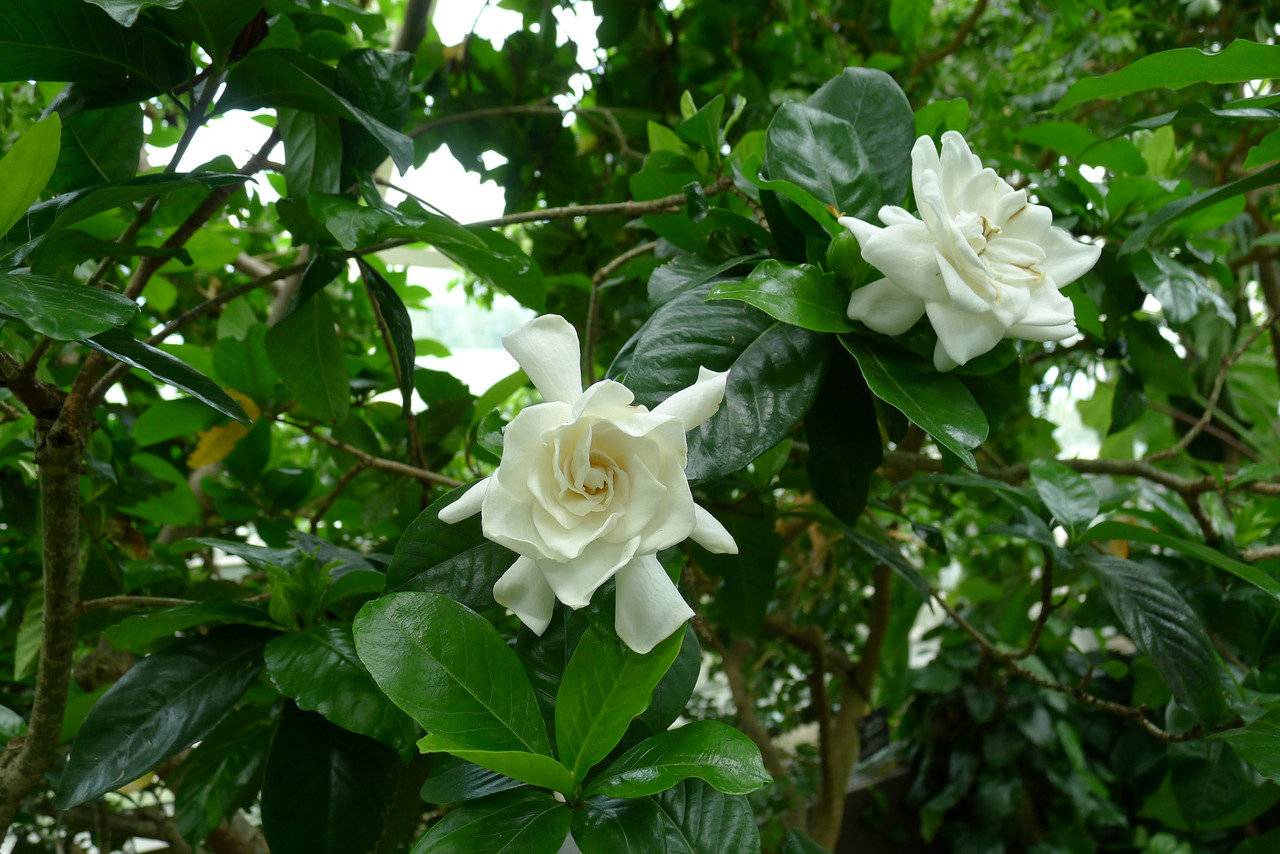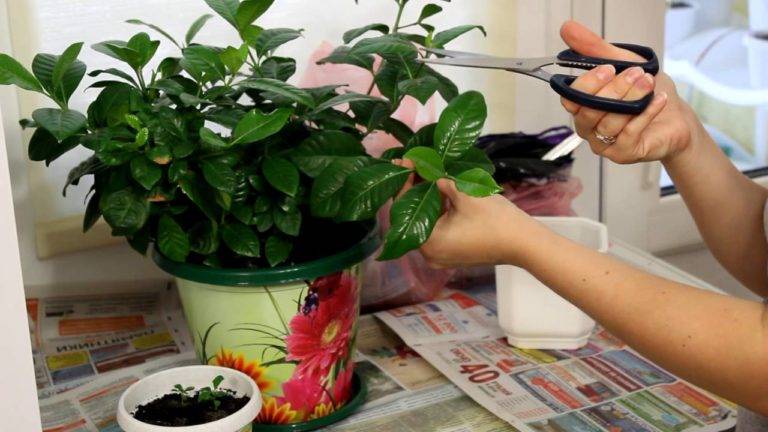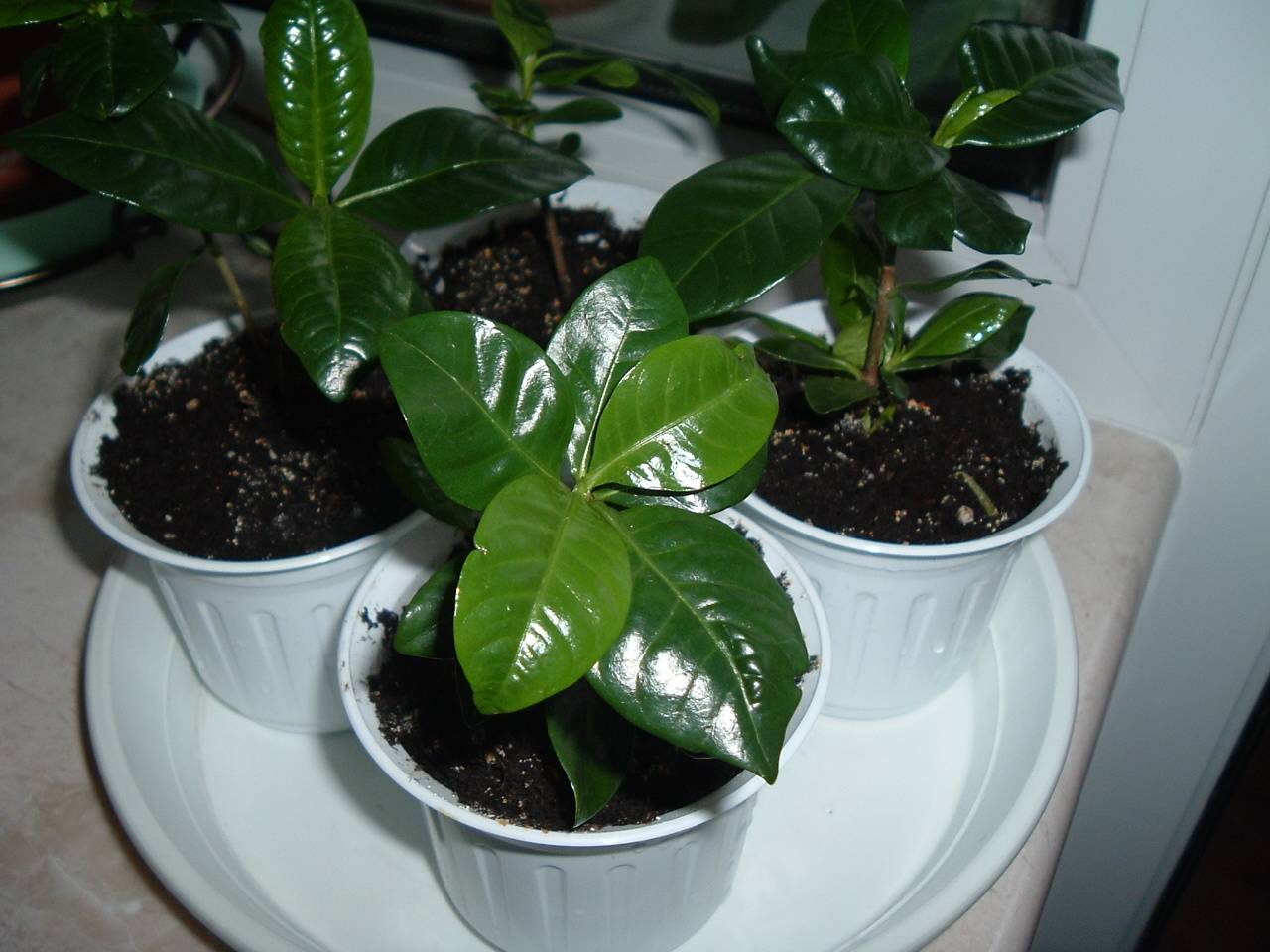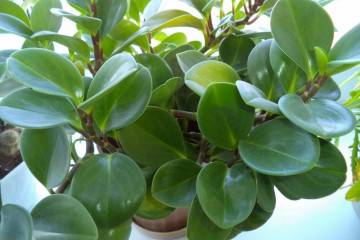Gardenia jasmine - how to care for a flower
Content:
Gardenia jasmine is a flower that many growers dream of. It attracts with the incredibly delicate beauty of the flowers that stand out effectively against the background of dark green glossy leaves. However, not every florist can take care of him. This is a very capricious plant that requires strict adherence to all care rules.
Gardenia jasmine - what kind of flower is it, what family does it belong to
This attractive plant belongs to the Mirenovy family. The area of its natural distribution is the eastern countries (China and Japan) and the African continent.
Brief description, history of origin or selection
Gardenia jasmine is native to Asia. It was first discovered there by the Englishman James Gordon. He brought it home, where the flower was immediately sold out. The botanical description was first compiled by the botanist John Ellis in the 18th century. The gardenia jasmine flower is characterized by:
- A tree-like shrub, which in natural conditions reaches almost 2 m in height, and at home, it does not grow higher than 50 cm.
- Leaves are egg-shaped with a pointed end, approximately 8 cm long, deep green in color with a glossy sheen.
- Buds appear at the tips of the shoots.
- Flowering is the reason for the popularity of the plant. The flowers are snow-white, up to 7 cm long, double, with an amazing smell.
How to care for your gardenia at home
Caring for jasmine gardenia at home, like many other exotic plants, is incredibly difficult. Only with careful observance of all the rules will the flower survive and delight the owner with gorgeous flowers.
Illumination and temperature conditions
Lighting for indoor jasmine gardenia should be bright, but diffuse, to prevent sunburn. The best place is the windowsill, located on the southwest side. Moving from place to place is discouraged as gardenia loves consistency. Therefore, when a flower appears in the house, it is worth taking care of its permanent residence.
Temperature regime is one of the most important components of flower care. If it does not meet the stated requirements, the leaves of the plant will instantly turn yellow and the buds will fall off. The optimum year-round temperature is + 20-25 ° С. The permissible minimum in winter is +17 ° С.
Watering rules and humidity
Watering is carried out with warm, well-settled water. Its frequency may vary in each specific case. The main thing is that the soil is not overdried or excessively moist. In this case, the soil should always be slightly moist. In autumn and winter, the plant is watered less often - the substrate is allowed to dry out to a depth of about 1.5 cm.
Since the homeland of the flower is tropical forests, high humidity must be provided at all times. For this, special devices are used that can be bought in flower shops. Leaves are additionally sprayed from a spray bottle. It is useful to place a vessel filled with wet moss or expanded clay next to the pot; open containers with water are also suitable.
Top dressing and soil quality
The soil in which you plan to grow your gardenia should be loose, nutritious and acidic. The optimum acidity level is 5.5 pH. You can also pick up the soil in flower shops. They sell soil mixtures for azaleas or exotic plants, they are perfect.
If you want to compose the substrate yourself, you need to take sod, coniferous and leafy soil in equal parts, add peat or humus.
Gardenia is fertilized with complex compounds twice a month. In winter, feeding is suspended.
Flower container size
The material from which the flowerpot is made can be anything. Both natural materials and plastic are suitable. Size matters. The pot should be spacious, but not overly. It is better if it only slightly exceeds the size of the root system.
Pruning and replanting
Refreshing pruning is done after each bloom. Weak, diseased cuttings and those on which withered flowers remain are removed. This will perfectly stimulate the growth of the plant and help it maintain its decorative effect. Once a year, it is worth pruning lignified cuttings, this will contribute to the rejuvenation of the flower and increase its bushiness.
Young gardenia is transplanted annually, adult specimens are transplanted much less often. As a rule, the transplant occurs when the roots have already filled the earthen lump. The procedure is carried out by transshipment method. The new flowerpot should be several centimeters larger than the previous one.
Features of winter care
In winter, the gardenia is watered less frequently than usual, and the feeding is completely stopped. But the preservation of the duration of daylight hours is mandatory. A fluorescent or LED lamp is suitable for this. But an ordinary incandescent lamp is not suitable, since it heats up the air and dries it out.
Features of flowering plants
The gardenia bloom is a special stage. At this time, the bush looks especially beautiful. Many flower growers dream of gardenia to bloom on their windowsill and delight not only the eyes, but also the sense of smell of others. The subtle scent is similar to jasmine.
A period of activity and rest
The dormant period begins in the second half of autumn and ends in the second half of March. Gardenia care at this time should be more moderate than usual. But you cannot neglect it. The flowering period begins in the summer and ends only in the middle of autumn.
Types and shape of flowers
Gardenia flowers are beige in color, but most often they are boiling white. The petals are dense, glossy, of the original shape. The gardenia jasmine flower resembles a rose. Interestingly, gardenia is more popular among indoor plants than the queen of flowers.
Flower reproduction methods
The plant propagates by seed or cuttings.
Propagation by cuttings
Reproduction using cuttings is the easiest way. The process is as follows:
- After flowering, the required number of 10 cm apical cuttings are cut. It is better if their lower part is slightly lignified.
- Only 3-4 upper leaves are left on the cuttings.The cut is treated with any disinfectant and placed for a while in a solution of water and a root growth stimulator.
- In the water, you can leave the shoots until the roots appear, but it is better to immediately plant them in a moist nutrient substrate.
- The container with plants is covered with polyethylene. Periodically, it must be lifted to ventilate, moisten the soil and spray the cuttings.
- As soon as they take root, a pick is carried out.
When young gardenias grow up to 18-20 cm, they should be pinched so that they begin to bush. Subject to all the rules of care, they will bloom after 6 months.
Seed propagation
This method is more laborious and less productive, and therefore is used less often by flower growers. Sowing rules:
- You can only sow fresh seeds collected by yourself. No more than three days have passed from the date of collection. This should be done in the spring.
- For 3-4 hours, the seeds are soaked in a solution of zircon or aloe juice.
- The seeds are laid out in a container with acidic soil, deepened by 5 mm, after which the soil is fertilized with a few drops of lemon juice.
- The container is covered with glass, plastic lids or polyethylene and placed in a warm shaded area.
- Periodically, the cover is removed to ventilate and moisten the soil with a spray bottle. When the first shoots appear, the box is placed on a warm windowsill with diffused light.
- Seedlings with a height of about 15 cm are seated and pinched.
Gardenias grown in this way will bloom only after 2-3 years.
Growing problems, diseases and pests
The main problems that arise when growing gardenia:
- lack of flowering;
- leaves turn black;
- the leaves turn yellow and fall off.
Pests who love this exotic:
- sooty mushroom;
- mealybug;
- spider mites;
- scabbards.
How to deal with them
The lack of flowering may not occur if any of the care rules are not followed, as well as when the gardenia pot is moved to a new place.
Some problems and solutions:
- Flowers fall off if moisture gets on them when spraying.
- Leaves turn black and yellow if proper care is not followed. This very reason is the catalyst for problems in 99% of cases.
- When pests appear, the flower must be rinsed under the shower, damaged parts removed, and the gardenia must be treated with an insecticide.
Jasmine gardenia is a difficult flower to care for. But nothing is impossible. Many flower growers take on this and succeed. They enjoy the extraordinary flowering of the bush and the scent of large, charming flowers. And one kind of gardenia blooming on its own windowsill can remove all memories of the difficulties of growing it.





















